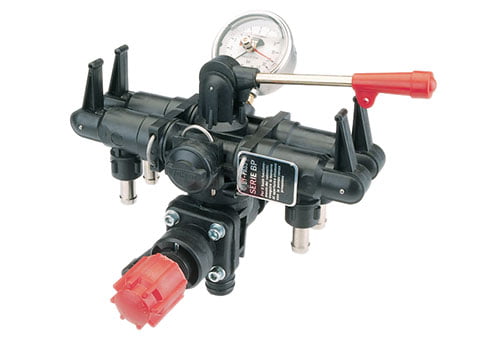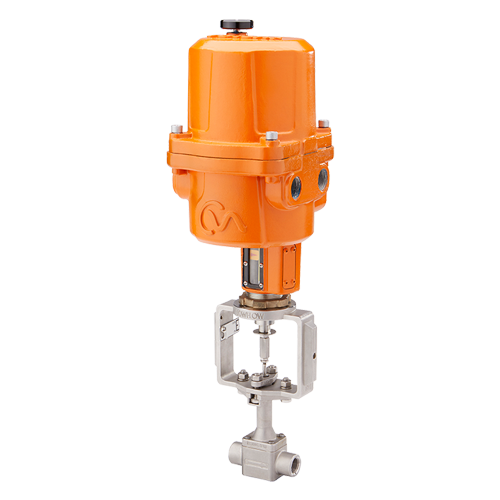Selecting the Right Control Valves: A Guide to Optimum System Efficiency
Selecting the Right Control Valves: A Guide to Optimum System Efficiency
Blog Article

Maximize Power Cost Savings and Convenience With Advanced Building Automation Controls
In the realm of modern-day style and center management, the combination of innovative building automation manages stands as a pivotal improvement. By harnessing the power of automation, structures can adapt, respond, and advance in means that were when unthinkable.
Power Efficiency Benefits
Power effectiveness benefits can dramatically reduce energy consumption and functional expenses in buildings. Energy-efficient systems, such as sophisticated structure automation controls, can enhance the use of resources like illumination, air conditioning, and heating, leading to reduced energy costs over time.
Furthermore, enhanced power performance can prolong the life expectancy of building equipment and systems. By running much more efficiently, heating and cooling systems, lighting components, and other structure elements experience less deterioration, resulting in reduced maintenance and replacement costs. In addition, energy-efficient buildings frequently regulate higher property values and rental prices, providing long-term monetary benefits to proprietors.
Moreover, energy effectiveness can enhance owner comfort and performance. Properly controlled indoor atmospheres with optimal illumination and thermal conditions create a more favorable and positive work area, causing enhanced employee complete satisfaction and efficiency. In general, the energy effectiveness advantages connected with innovative building automation controls are diverse, incorporating price financial savings, ecological stewardship, and resident health.
Improved Convenience Control
Enhancing comfort control in building atmospheres needs an advanced combination of innovative automation systems for optimal passenger well-being. By making use of innovative building automation controls, centers can tailor the interior setting to satisfy the details requirements and choices of occupants. control valves.
By including these innovative controls, structures can not just enhance comfort however additionally enhance energy performance by enhancing system procedures based on real occupancy and usage patterns. Eventually, focusing on resident convenience with advanced automation systems leads to a more delightful and healthier interior atmosphere.
Functional Efficiency Improvements

Furthermore, the execution of real-time tracking and analytics tools enables building operators to recognize power inadequacies and functional abnormalities without delay. By continuously keeping track of power use patterns and system performance metrics, modifications can be made in real-time to maximize energy consumption and ensure peak operational performance. control valves. Additionally, incorporating demand response approaches into building automation controls can further improve functional effectiveness by dynamically adjusting energy usage based upon grid problems and rates signals
Indoor Climate Optimization
Efficient webpage interior environment optimization is a basic facet of building automation controls, ensuring residents' comfort and well-being while taking full advantage of energy financial savings. By using innovative sensors and controls, developing automation systems can continually adjust and keep track of temperature, humidity levels, air top quality, and ventilation to create an ideal indoor setting. Maintaining consistent and comfortable conditions not just enhances owner fulfillment yet likewise enhances efficiency and general health.
Interior environment optimization also plays an essential function in power efficiency. By fine-tuning air conditioning, air flow, and home heating systems based on real-time data and tenancy patterns, building automation controls can significantly decrease energy consumption - control valves. For instance, carrying out methods such as demand-controlled ventilation and thermal zoning can aid decrease energy discover this waste while guaranteeing that each location of the structure obtains the required conditioning.

Sustainable Atmosphere Development
Structure automation manages not only optimize indoor climate conditions for energy effectiveness and resident comfort however likewise lay the structure for creating a lasting atmosphere with tactical management of resources and systems. By integrating sophisticated building automation technologies, such as sensing units, actuators, and smart software, facilities can readjust and monitor power use in real-time to lessen waste and reduce their carbon impact. These systems allow anticipating upkeep, recognizing prospective problems prior to they rise and optimizing equipment efficiency to improve durability and efficiency.
Additionally, lasting setting creation prolongs beyond energy administration to incorporate water conservation, waste decrease, and indoor air top quality enhancement. Structure automation controls can regulate water usage, spot leakages, and make sure appropriate garbage disposal methods, contributing to total sustainability efforts. Furthermore, by regulating and keeping an eye on air flow and filtration systems, these modern technologies improve passenger health and performance while reducing energy consumption linked with heating and cooling procedures.
Final Thought
To conclude, progressed building automation regulates deal significant benefits in regards to energy financial savings, comfort control, operational efficiency, interior environment optimization, and developing a sustainable atmosphere. By executing these controls, buildings can achieve optimal performance while reducing energy intake and enhancing occupant convenience. It appears that using sophisticated automation modern technology is crucial in enhancing structure efficiency and producing a more sustainable future.
Energy efficiency benefits can significantly reduce energy usage and functional prices in buildings. On the whole, the energy performance advantages associated with innovative structure automation controls are diverse, including cost page financial savings, ecological stewardship, and owner health.
In addition, including demand reaction strategies into structure automation controls can better enhance operational performance by dynamically changing energy usage based on grid problems and rates signals.
Structure automation manages not only maximize indoor environment conditions for power performance and owner convenience however also lay the foundation for producing a sustainable atmosphere through strategic administration of systems and resources.In final thought, progressed structure automation manages deal substantial advantages in terms of energy cost savings, comfort control, functional efficiency, interior climate optimization, and creating a lasting environment.
Report this page